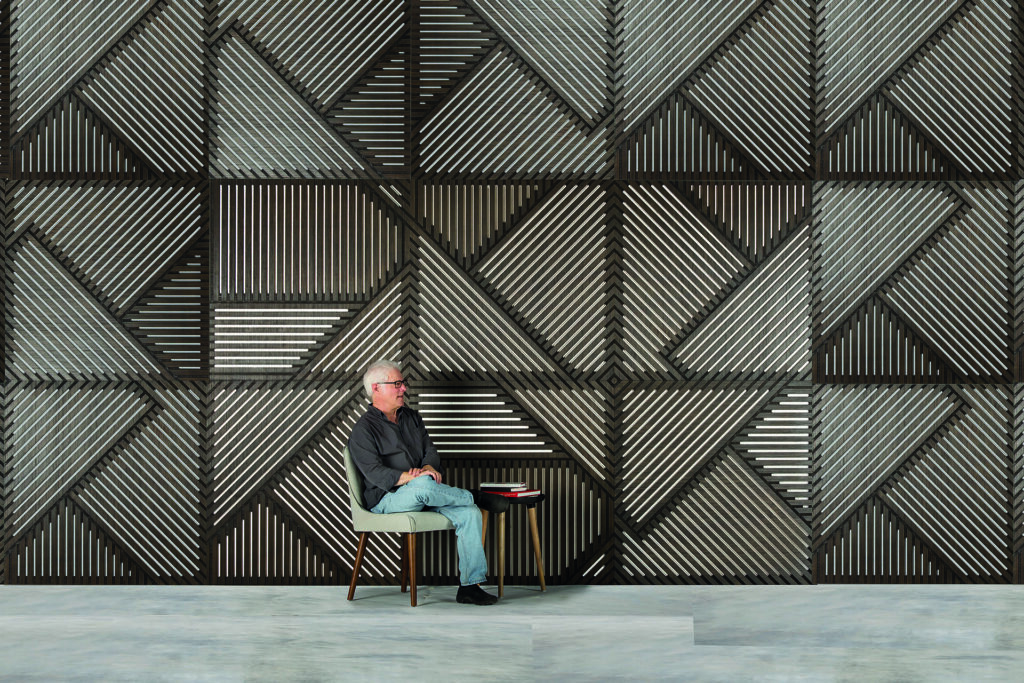Understanding the Noise Reduction Coefficient (NRC)
Understanding NRC is a vital part of any architectural specifier’s job. When designing a space, acoustics play a pivotal role in creating a comfortable, functional environment. Whether it’s an open-plan office, a classroom, or a conference room, controlling sound is essential to reduce distractions and improve communication.

UNDERSTANDING NRC IN ACOUSTICAL DESIGN
A key metric in acoustical design is the Noise Reduction Coefficient (NRC)—a simple yet powerful measure of how effectively a material absorbs sound.
WHAT IS THE NOISE REDUCTION COEFFICIENT (NRC)?
The Noise Reduction Coefficient (NRC) measures the sound absorption of a material, ranging from 0.0 to 1.0:
0.0: Reflects all sound, providing no absorption (e.g., concrete or glass).
1.0: Absorbs all sound, offering maximum absorption (e.g., acoustic foam).
Most acoustical panels fall between 0.40 and 0.90, with higher values indicating better sound absorption. NRC ratings help designers make informed decisions when controlling echo, noise levels, and sound clarity.
WHY DOES THE NRC MATTER?
The NRC impacts the acoustic comfort of a space, which is essential for:
Open-Plan Offices: Minimize distractions and create private, quiet zones.
Classrooms & Auditoriums: Enhance speech intelligibility and reduce echo.
Conference Rooms: Improv communication and focus during meetings.
Choosing the right NRC rating depends on the function of the space and how sound needs to behave within it.
NRC IN ACTION: SELECTING THE RIGHT MATERIAL
Low NRC (0.0 – 0.40) – Reflective Materials: Best for spaces where sound needs to be carried, such as concert halls or areas where acoustics aren’t a primary concern.
Medium NRC (0.40 – 0.70) – Balanced Absorption: Ideal for general-purpose spaces like offices, classrooms, or restaurants. Materials like our TAC panels (NRC .70) offer excellent absorption while maintaining cost-effectiveness.
High NRC (0.70 – 1.0) – Maximum Absorption: Used for spaces requiring precise sound control, like recording studios, theaters, or high-end meeting rooms. Products like our Plyboo Sound panels (NRC .85) excel in these environments.
CHOOSING THE RIGHT SOLUTION FOR YOUR SPACE
While NRC ratings are essential, acoustical performance isn’t the only factor to consider. When selecting materials, keep these elements in mind:
Design Aesthetic: Does the material complement your overall design vision?
Durability: Can the material withstand the wear and tear of its environment?
Budget: Does the product balance performance and affordability?
Our wide range of acoustical solutions includes both budget-friendly and high-end options, all with carefully chosen NRC ratings to suit your project’s needs.
Expert Tip: NRC ratings work best when paired with other metrics like Sound Transmission Class (STC), which measures sound insulation, for a complete acoustical strategy.
EXPLORE NRC-OPTIMIZED MATERIALS
At Robin Reigi, we offer a curated selection of acoustical panels designed with optimal NRC ratings to suit any project—whether you’re seeking budget-friendly solutions like TAC panels or design-forward options like Plyboo Sound.
Let us help you find the perfect balance of form and function for your next project.

